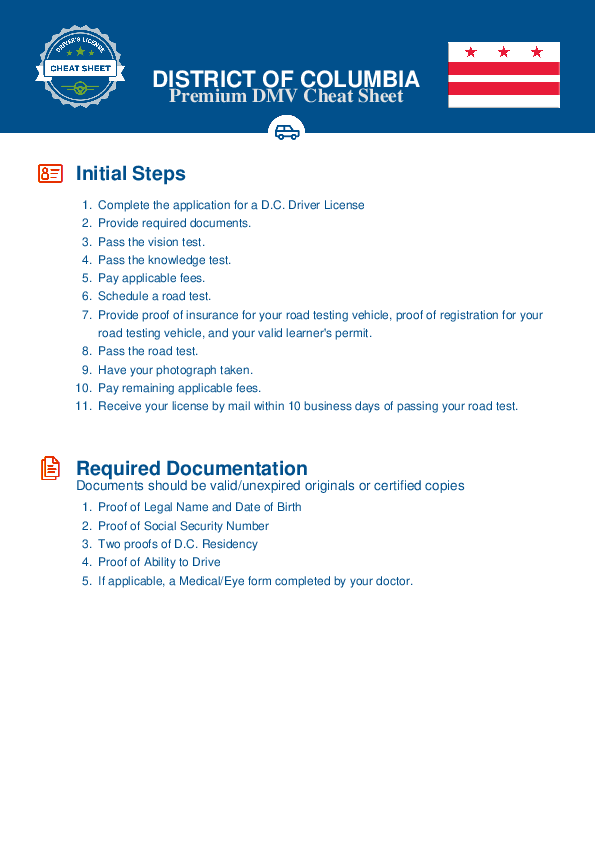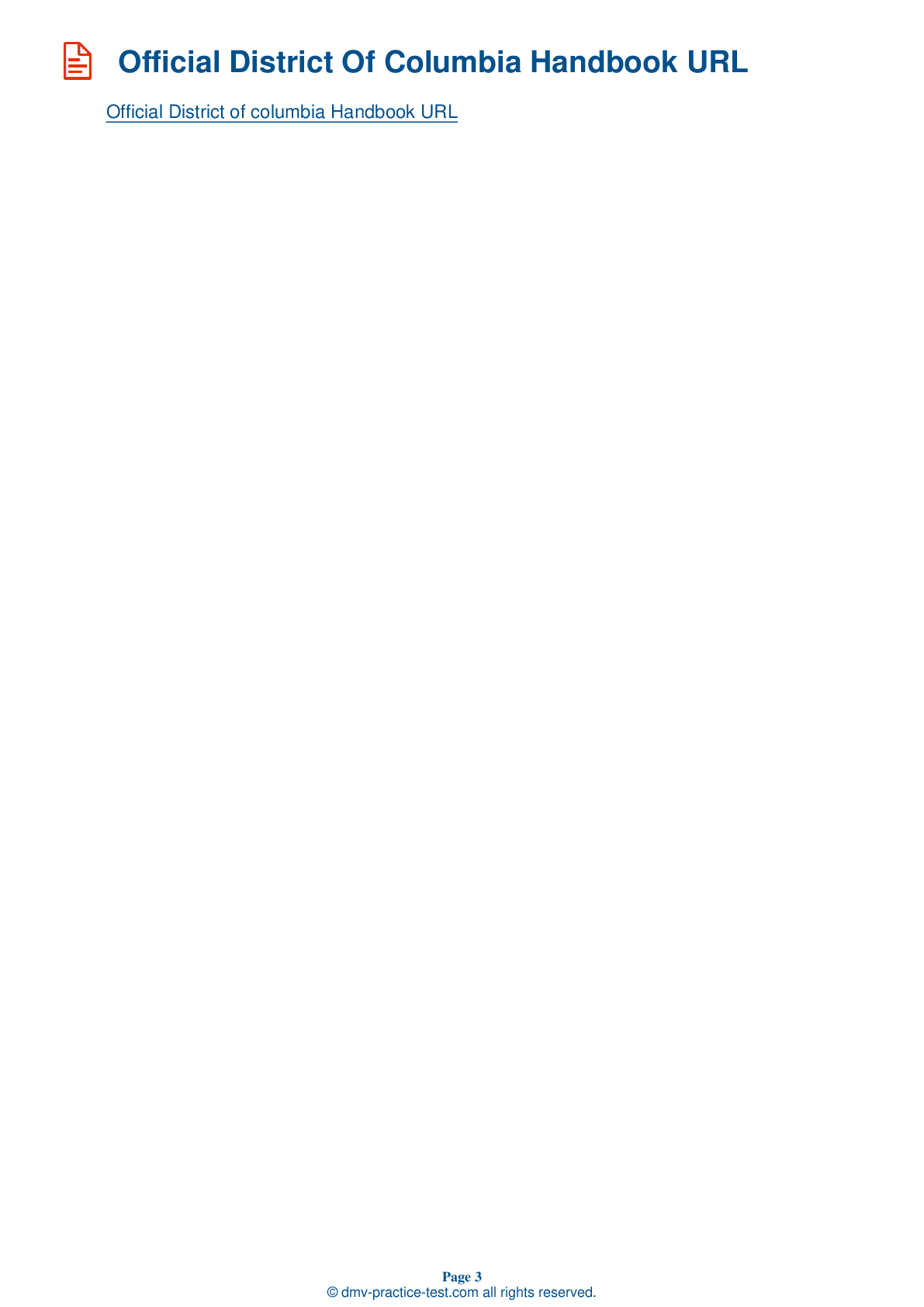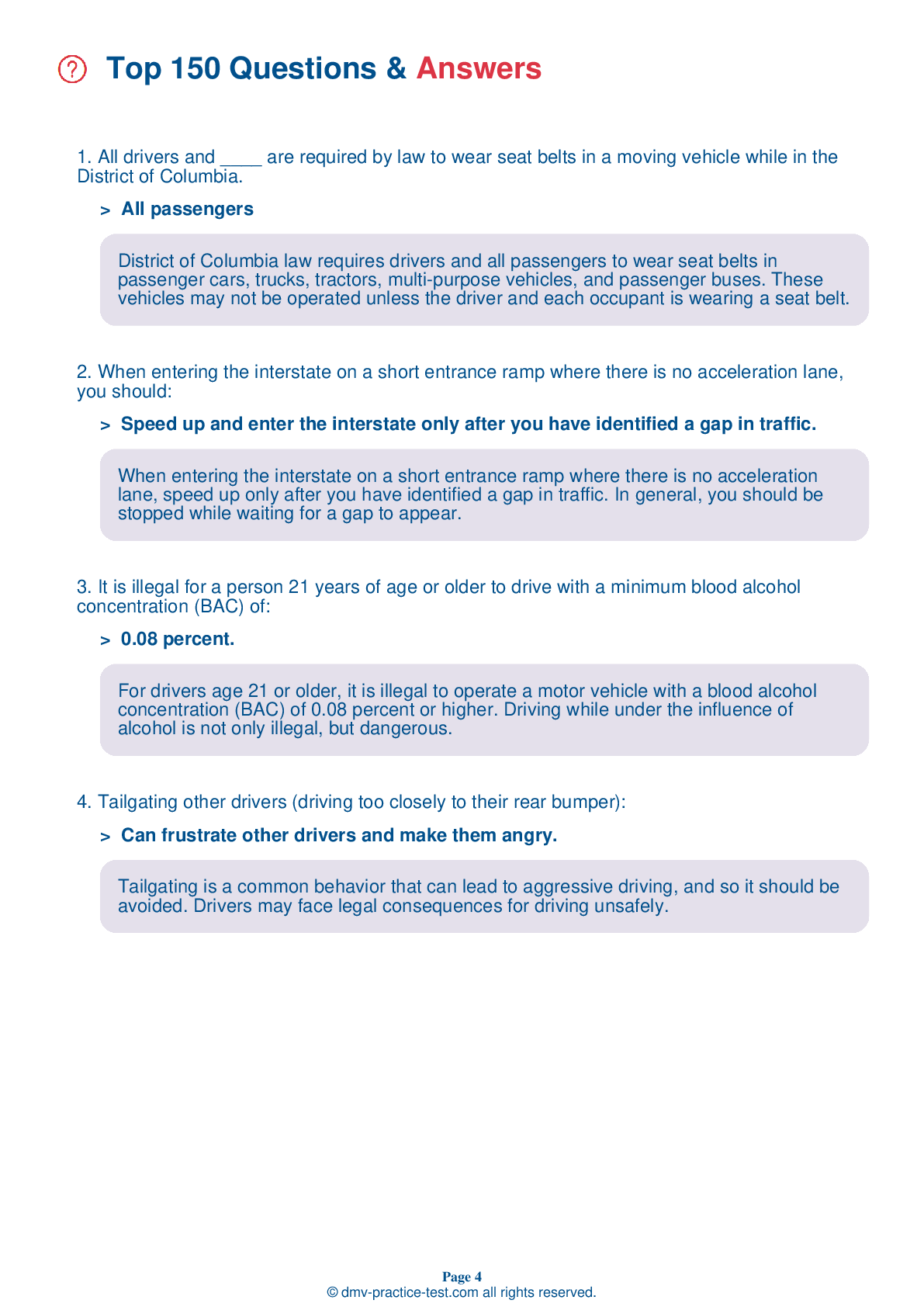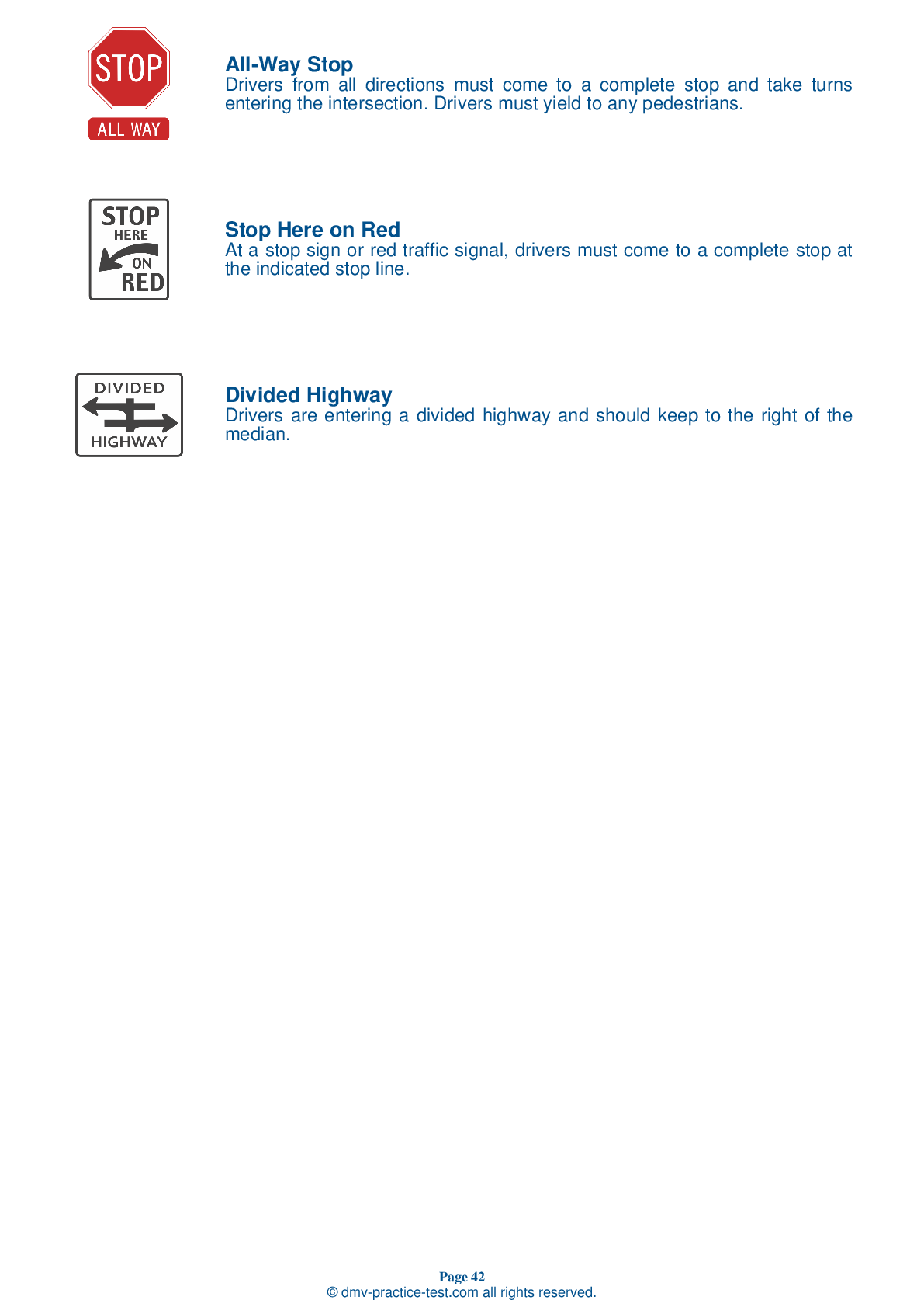FREE District Of Columbia DMV Practice Test #24
This set of District Of Columbia DMV practise tests was been updated for January 2025. It includes questions based on the District Of Columbia Driver Handbook's most significant traffic signs and laws for 2025. Use actual questions that are very similar (often identical!) to the DMV driving permit test and driver's licence exam to study for the DMV driving permit test and driver's licence exam.
On the practise exam, each question gets a tip and explanation to help you remember the concepts. The written component of the official DMV test will include questions about traffic rules, traffic signs, and driving statutes, as well as information from the Driver Handbook.
To achieve the required passing grade, you must correctly answer 20 of the 25 questions. Take our DMV practise exam to help you prepare for your District Of Columbia instruction permit or driver's licence.
The DMV exam is available in several languages.
Using any form of testing help will result in an automatic fail, and the DMV may take further action against your driver's licence, so avoid it.
1 . While driving at night, a vehicle coming toward you has its high beams on, making it hard for you to see the road ahead. You should:
If an oncoming driver fails to dim their high beams, you should avoid looking directly at the headlights. Instead, look toward the right edge of your lane and watch the oncoming vehicle out of the corner of your eye.
2 . When passing another vehicle, you should return to your original lane when:
When passing another vehicle, move back into your original lane only when you can see the passed vehicle’s headlights in your rearview mirror. This ensures that you will have enough room to safely pull back in front of the other vehicle.
3 . Braking distance is affected by:
Factors that can affect braking distance include how fast your vehicle is traveling, the condition of your brakes and tires, and the condition of the pavement.
4 . This sign tells you that:
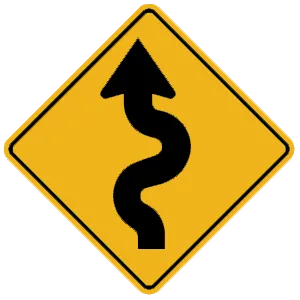
This sign warns of an upcoming winding road with three or more curves.
5 . Nighttime is the safest time for cyclists to ride their bikes.
A bicycle is difficult to see in the dark, even when the cyclist is wearing a proper headlight and reflector. Both motorists and bicyclists should be especially alert when driving at night in order to prevent dangerous collisions.
6 . This sign means:
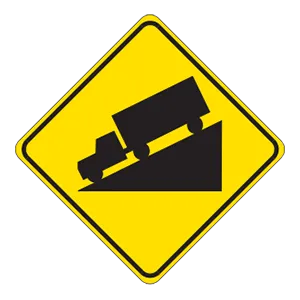
Warning signs prepare drivers for upcoming road conditions and hazards and are usually yellow with black markings. This sign warns drivers about an upcoming steep hill. They should adjust their speed accordingly to avoid brake damage or collision.
7 . Water on the road can cause a vehicle to hydroplane. Your car may hydroplane at speeds as low as:
Hydroplaning occurs when there is standing water on a roadway. At speeds up to 35 mph, most tires will channel water away from the tire. As your speed increases past 35 mph, tires cannot channel the water as well and your tires may start to lose contact with the road and ride over the water like a set of water skis.
8 . A speed restriction sign:
Curve and turn warning signs often have attached advisory speed signs that show a recommended driving speed for drivers in the curves and turns. Although a driver may feel comfortable driving at a higher speed in fair weather, they should never do so under rainy, snowy, or icy conditions.
Need Car Insurance? No problem!
Compare the best rates in District Of Columbia and find a personalized policy that meets your needs.
1. Are You Currently insured ?
2. Married ?
3. Do you own your Home?
4. Do you have more than 1 car ?
5. Have you or a Family Member Honorably Served in U.S. Military ?
6. Your Name
7. Age
8. Zip code
IMPORTANT REMINDER:Auto Insurance is Mandatory to drive in District Of Columbia. Get covered before you hit the road to avoid any fines.
Ranked by best match
